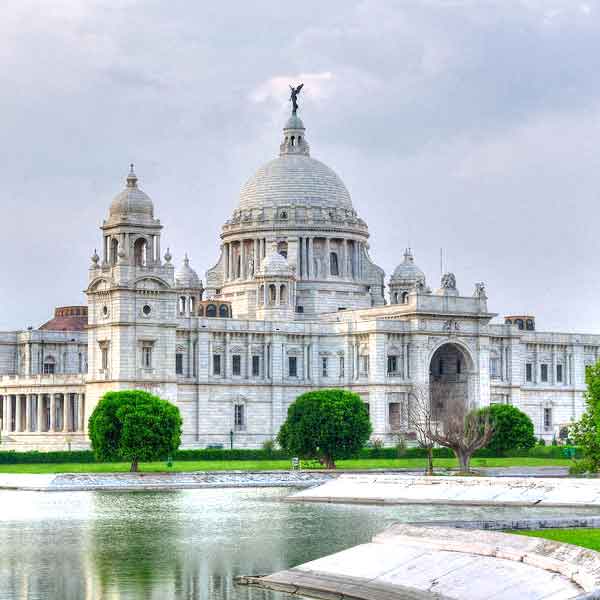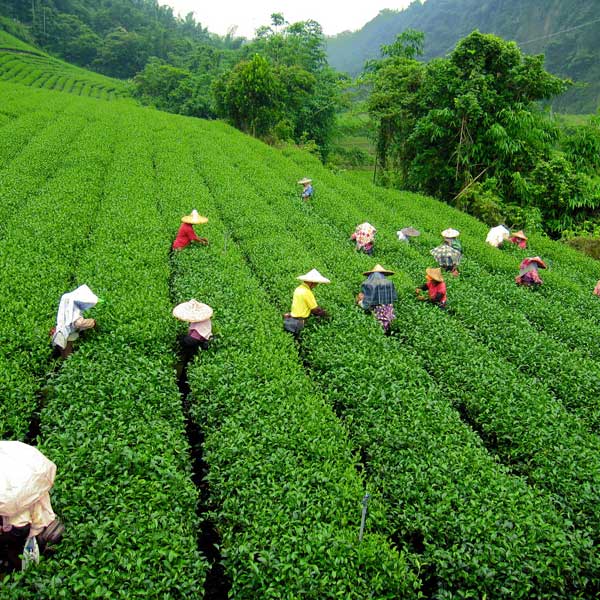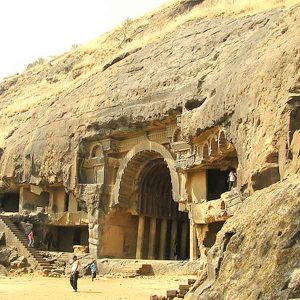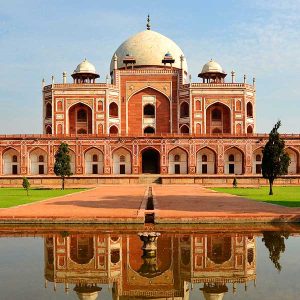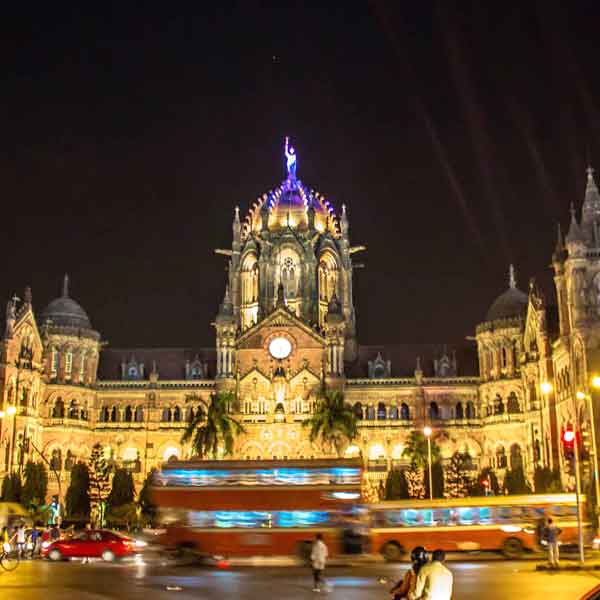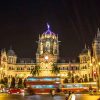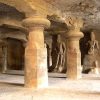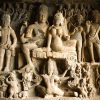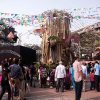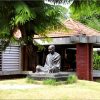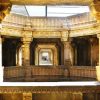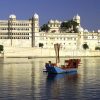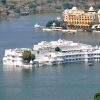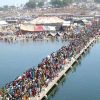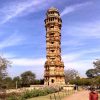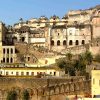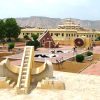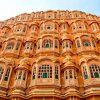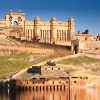Day 01: Arrive Mumbai
Arrive in Mumbai and transfer to a hotel. Later this morning proceed for a sightseeing tour of Mumbai.
Mumbai has a golden history of hundreds of years and never fails to mesmerize its visitors amidst the heritage monuments. It has a beautiful harbor studded with hilly islands and a palm-fringed shore. Besides being the major port of India, Mumbai is also a great industrial centre. It is a cosmopolitan city, which owes its prosperity to the industry and enterprise of its population of about fifteen million. It is also a home to many artists.
Visit some of the main sights such as the Prince of Wales museum, Dhobi Ghat, Gateway of India, Victoria Terminus (World Heritage Site), Haji Ali’s Tomb, Mahalaxmi Temple, the High Court, Mani Bhawan, etc. Overnight in Mumbai.
Day 02: Mumbai.
After breakfast visit the famous Elephanta Caves (World Heritage Site) by boat.
Elephanta Caves: Six miles across Mumbai harbour is a small island called Elephanta or ‘Gharpure’. It contains a fine cluster of 6th – 8th A.D. rock-cut caves. They were carved during the Golden Age of the Guptas and inspired by the worship of Shiva. The sculptures are beautifully executed and the most outstanding of these is the Maheshmurthy or Trimurthi, a 4.5 m high three headed bust hewn from a single rock, representing the triple aspects of Shiva (the Creator, the Preserver and the Destroyer). It is regarded as a masterpiece of Indian art.
Return back to the mainland and proceed to a local restaurant for lunch. Afternoon free for shopping, leisure or sight-seeing. Overnight in Mumbai.
Day 03: Mumbai.
After breakfast drive to Kala Ghoda – the old art district of Mumbai – for a Mumbai Heritage Walk. During this 2 hour walk you will be shown beautiful buildings and informed about Mumbai’s art and architecture by someone knowledgeable about the city’s past.
Afternoon will be spent visiting a few famous art galleries. In the evening enjoy the famous and lively Kala Ghoda Festival. Kala Ghoda Arts Festival is an annual festival in either late January or early February which is held at the Kala Ghoda area of South Mumbai. The sub-festivals feature the visual arts, dance, music, theatre, cinema, literature, lectures, seminars and workshops, heritage walks, special events for children, and a vibrant street festival. The street area of Rampart Row is closed off to vehicular traffic for the duration of the festival, with the entire area becoming a street mela (fair), with food stalls, artisans selling their creations, artists who sketch instant portraits, street art installations and the like. Overnight in Mumbai.
Day 04: Mumbai to Ahmedabad.
Early morning proceed to the airport to take a morning flight to Ahmedabad. Upon arrival transfer to a local hotel.
Situated on the River Sabarmati, Ahmedabad is named after a Muslim Sultan – Sultan Ahmed Shah, who founded it in the year 1411 A.D. It is now one of the industrial centres of Western India, ranking high among the cities of India for its architectural remains. Its palaces, mosques and tombs are a perfect specimen of Indo – Saracenic architecture in Gujarat.
Later proceed for some sightseeing of Ahmedbad, visiting Jama Masjid, Sidi Sayed’s Mosque and Sabarmati Asharam.
Jama Masjid is one of the most splendid mosques of India. Constructed in the year 1423 A.D, it was established by Sultan Ahmed Shah, the founder of Ahmedabad city. Built in yellow sand stones, this marvellous mosque has a combination of Hindu and Muslim styles of architecture. There are about 260 columns within the mosque to protect its roof.
Sidi Sayed’s Mosque is one of the most prominent mosques in the Ahmedabad city. Constructed in the year 1573, the mosque was established by Sidi Sayed, a slave of Sultan Ahmed Shah. It consists of ten semi circular windows, the appeal of which is accentuated by the splendid mesh covering them, which is more popularly known as ‘Jali’ (lattice). This monument has gained a worldwide recognition due to its splendour.
Set up in the year 1915, Sabarmati Ashram was the central point from where the struggle for India’s Independence was started. Till 1930, the ashram was the home of Mahatma Gandhi. It now houses a museum (that exhibits the life of Mahatma Gandhi), library, auditorium and photo galleries. Overnight in Ahmedabad.
Day 05: Ahmedabad.
After breakfast proceed to see the world famous Calico Museum of Textiles, which is one of the finest museums of the world. It exhibits an enormous collection of fabrics collected from all over the country; some fabrics are traced back to the times of seventeenth century. The museum is divided into two separate sections: one for the religious clothing and the other for historic textiles. The museum also houses furniture and various kinds of crafts gathered from different parts of the country.
Later, travel to Adalaj step-well – a popular tourist attraction of the city. The well was built in 1499 A.D. by Queen Rudabai. Adalaj Vav (well) is adorned with intricate carvings and splendid sculptures. The walls of the well depict figures of flowers, birds, fish and other ornamental designs. There are a number of corridors and platforms surrounding the well. The three entrances contain steps that reach up to the stepped corridors. These corridors meet on a platform, which has an octagonal opening on the top. In the past, these step wells were frequented by travellers and caravans, as stopovers, along trade routes. Overnight in Ahmedabad.
Day 06: Ahmedabad to Udaipur.
After early breakfast drive to Udaipur. Upon arrival, check into the hotel.
Udaipur is known as the City of Lakes. It is a serene and beautiful city, one of the most romantic spots in India. In dramatic contrast to the battle-scarred, desert bound, fortress towns of the state, it presents an enchanting picture of white marble palaces, placid blue lakes, and a girdle of green hills that keep the wilderness at bay.
At sunset, enjoy a beautiful boat ride on the Lake and visit Jag Mandir and Jagdish Temple. Lake Pichola is home to a famous island, the Jag Mandir Island which lies on its southern edge. The construction of a palace on this island was begun by Maharana Karan Singh II of Udaipur. For tourists, the Jag Mandir Palace is a marvellous place to spend some beautiful moments. It is also heartening to note that the architecture of the world famous Taj Mahal draws a bit of its inspiration from the pietra dura work of this island palace. Overnight in Udaipur.
Day 07: Udaipur.
In the morning proceed for a sightseeing tour of Udaipur. Visit City Palace of Udaipur which is one of the most remarkable constructions of the Rajput rulers of Rajasthan. Located in the heart of the city of Udaipur and towering over the Lake Pichola, the City Palace unfailingly infuses a sense of awe in the hearts of its onlookers. It is a standing testimony of Rajput passion for art and architecture despite the fact that the exterior is not as elegant as the interiors. Located inside is Surai Gokhada or the Sun balcony, Badal Mahal, Sheesh Mahal (Mahal means Palace), Bheem Vilas and the Peacock Courtyard. The Zenana Mahal, Fateh Prakash, Durbar hall and the City Palace Museum are other places of interest.
In the evening visit the local handicrafts area of the city. Overnight at a hotel in Udaipur.
Day 08: Udaipur to Dhariyawad.
This morning proceed to the charming little town of Dhariyawad. The drive to Dhariyawad is a very scenic drive passing through ancient villages and dotted with old forts. On arrival transfer to a heritage hotel. Later in the evening proceed for an interesting walk through the village. You will see how the local tribes live and work in the village. Later, enjoy a traditional evening of folk dances. Overnight at the hotel.
Day 09: Dhariyawad.
After breakfast proceed for a full day excursion to the famous Bhaneshwar Tribal Fair – a religious festival with simple and traditional rituals. The Bhaneshwar fair is predominantly a tribal fair with more than half of the congregation consisting of Bhils. The religious site of the Shiva Temple at Bhaneshwar is extremely sacred for Hindus in general and Bhil tribe in particular. Prayers are offered at the temples of Shiva and Vishnu. The fair is held in the month of February/March each year. Fun and frolic of the fair can best be seen during the last two days of the fair – that is, a day before and on the full moon day. The tribes of Rajasthan and Gujarat are some of the most colourful in India and their costumes, jewellery, music and songs are worth documenting. One can buy utensils, tribal costumes and jewellery, pottery and tribal arms as unforgettable souvenirs. Overnight at the hotel in Dhariyawad.
Day 10: Dhariyawad to Bijaipur via Chittorgarh.
After breakfast proceed to Bijaipur, stopping enroute to visit the very famous Chittorgarh Fort.
Chittorgarh Fort is a living testimony to the bravery of the great Rajput rulers who laid down their life fighting a superior enemy instead of leading a life of submission. The fort is a fine example of the Rajput style of architecture. Standing tall in one of the oldest cities in Rajasthan, the Chittorgarh Fort is perched on a 152-m-high rocky hill. It epitomises the doomed romantic ideal of Rajput chivalry. Named after Chittrangad Mauraya, the fort is a fine example of the Rajput style of architecture. The Sisodia ruler Ajay Pal (1174-1177 AD) improvised the fort wall built by the Gahlot king in the ninth century AD. The immense stretch of the walls and the ruined palaces relate the saga of innumerable sieges and heroism. The main places of interest within the precincts of the fort are the two towers known as the ‘Kirti Stambh’ (Tower of Fame) and the ‘Vijay Stambh’ (Tower of Victory). Besides these, there are several temples, reservoirs, and palaces originating between the 9th and 17th centuries AD. There is also a big complex of Jain temples within the fort.
After visiting the Chittorgarh fort proceed to Bijaipur. Overnight in Bijaipur.
Day 11: Bijaipur to Bundi.
After breakfast proceed to Bundi and check into the hotel. After a brief rest visit this enhanting medieval town.
Bundi’s fantastic palaces and narrow winding streets are reflected in the translucent waters of the Nawal Sagar Lake – shimmering, mirage like, unchanged by time. There are more than 50 step wells with intricate carvings and sculptures. Overnight in Bundi.
Day 12: Bundi to Jaipur.
Travel to the Pink City of India – Jaipur – after breakfast. On arrival, check into the hotel and freshen up.
Jaipur is the first planned city of India, located in the desert lands of Rajasthan. The city that once had been the capital of royalty, now serves as the capital city of Rajasthan. The very structure of Jaipur resembles the taste of the Rajputs and the Royal family. The city, painted in pink, grasps the appreciation of every visitor.
After lunch proceed for a city tour of Jaipur. During the city tour visit the Hawa Mahal, Jantar Mantar and City Palace.
City Palace forms one of the most famous tourist attractions and is a major landmark in Jaipur. The beautiful palace was built by Maharaja Sawai Jai Singh during his reign. Among the various forts and palaces of Jaipur, City Palace stands apart with its outstanding art and architecture. The complex covers a huge area which is divided into a series of gardens, courtyards and buildings. Initially, Raja Jai Singh built the outer wall occupying a huge area. The additional grand buildings were constructed later by the succeeding rulers.
Hawa Mahal (Palace of Winds)is a major landmark and a famous tourist attraction of Jaipur. The splendid Rajputana and Mughal architecture of Hawa Mahal still speaks the glory of the royal family.
Jantar Mantar in Jaipur is the largest stone observatory in the World and this feature makes it a special destination for a traveller. It is one of the five astronomical observatories built by Maharaja Jai Singh, the founder of Jaipur.
After sightseeing, if time permits, proceed for shopping. Overnight in Jaipur.
Day 13: Jaipur.
After breakfast proceed to visit the famous Amber Fort and enjoy an elephant ride. Amber Fort is located in Amber (Jaipur), which used to be the capital of the Kachhwaha clan, till Jaipur was made the official capital in 1727. The Amber Fort looks stunning, all-built in white marble and red sandstone. To add to its charm, Maotha Lake makes its foreground. The intricate carvings on the walls and ceilings simply astonish the visitors. The minute mirror work adds to the grand appearance and royalty of the halls.
Enjoy shopping in this beautiful historic city. See miniature paintings, stone cutting and polishing, pottery and handicraft being made. Overnight in Jaipur.
Day 14: Jaipur to Delhi. Depart Delhi.
After lunch proceed to Delhi to take your flight back home from the international airport.
This itinerary might be adjusted to coincide with actual dates of ‘Kala Ghoda’ Festival in Mumbai and Bhaneshwar Tribal Fair in Rajasthan.
Date and price to suit individual arrangements based on 2 people sharing. Breakfast included. Private air-conditioned car and driver with English speaking guides for sightseeing.

